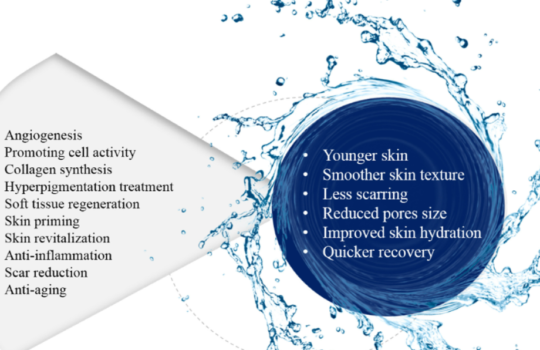Evaluating a great hyaluronic acid (HA) filler involves considering several factors, from its formulation to its clinical outcomes. Here are key points to assess:

1. Viscosity and Density
- Viscosity: A thicker filler (higher viscosity) tends to provide more lift and volume, suitable for deeper wrinkles or facial contouring. A thinner filler (lower viscosity) is better for more superficial treatments like fine lines or under-eye hollows.
- G’ (Shear Modulus): This is a measure of the stiffness of the filler. Higher G’ values indicate a firmer, more volumizing product, while lower G’ values are better for areas where flexibility and smoothness are important.
2. Cross-Linking Technology
- Cross-linking refers to how HA molecules are bound together. A highly cross-linked HA is more stable and longer-lasting. Some fillers use advanced cross-linking technology (like Vycross or other proprietary methods) that allow for a smoother product with more uniform consistency, leading to more natural-looking results and reduced swelling.
3. Particle Size
- Filler products vary in particle size depending on the intended treatment area. Larger particles are better for deep dermal injections (e.g., for lifting or volumizing), while smaller particles are suitable for fine lines and delicate areas (e.g., under the eyes).
4. Longevity
- HA fillers typically last from 6 months to 2 years, depending on the product, area of injection, and individual metabolism. Highly cross-linked HA products tend to last longer.
- Some HA fillers contain a stabilizer (like BDDE) to prolong the filler’s lifespan.
5. Hydration and Natural Integration
- Good HA fillers integrate seamlessly into the skin, improving hydration and elasticity. They should stimulate collagen production and provide a natural, hydrated look without looking artificial or causing lumps or bumps.
6. Safety Profile
- The filler should be FDA-approved (in the U.S.) or have equivalent regulatory approval in other countries.
- Consider the filler’s track record for adverse effects, such as nodules, migration, or vascular complications. A reputable product will have clinical trials or a long history of safe use.
7. Brand Reputation and Clinical Evidence
- Established brands like Restylane, Juvederm, and Belotero have a track record of producing reliable, safe, and effective fillers.
- Look for clinical studies, peer-reviewed articles, and expert opinions backing the effectiveness and safety of the filler.
8. Patient Experience and Feedback
- A great filler should provide consistently positive outcomes in real-world settings. Patient satisfaction, ease of injection, minimal downtime, and natural-looking results are crucial factors.
9. Cost and Value
- While price shouldn’t be the only factor, high-quality fillers tend to have a higher cost. Ensure that the filler you choose offers good value in terms of durability, effectiveness, and safety.
10. Treatment Area and Intended Purpose
- Different HA fillers are designed for different purposes. For example:
- Juvederm Voluma is designed for deeper areas like the cheeks and jawline.
- Restylane Lyft works well for mid-face and cheekbones.
- Belotero Balance is often chosen for fine lines and delicate areas, like the lips or under the eyes.
By considering these factors, you can evaluate a great HA filler for your specific needs or for patients you’re treating. ACMISAWA’s H.A fillers can achieve more than 10 benefits for each distributor, welcome to know more from our link: https://acmisawa.com/product/hyaluronic-acid-dermal-filler/
References:
- Choosing the Best Filler Type for Each Treatment Area
2. Injectable Fillers Guide







